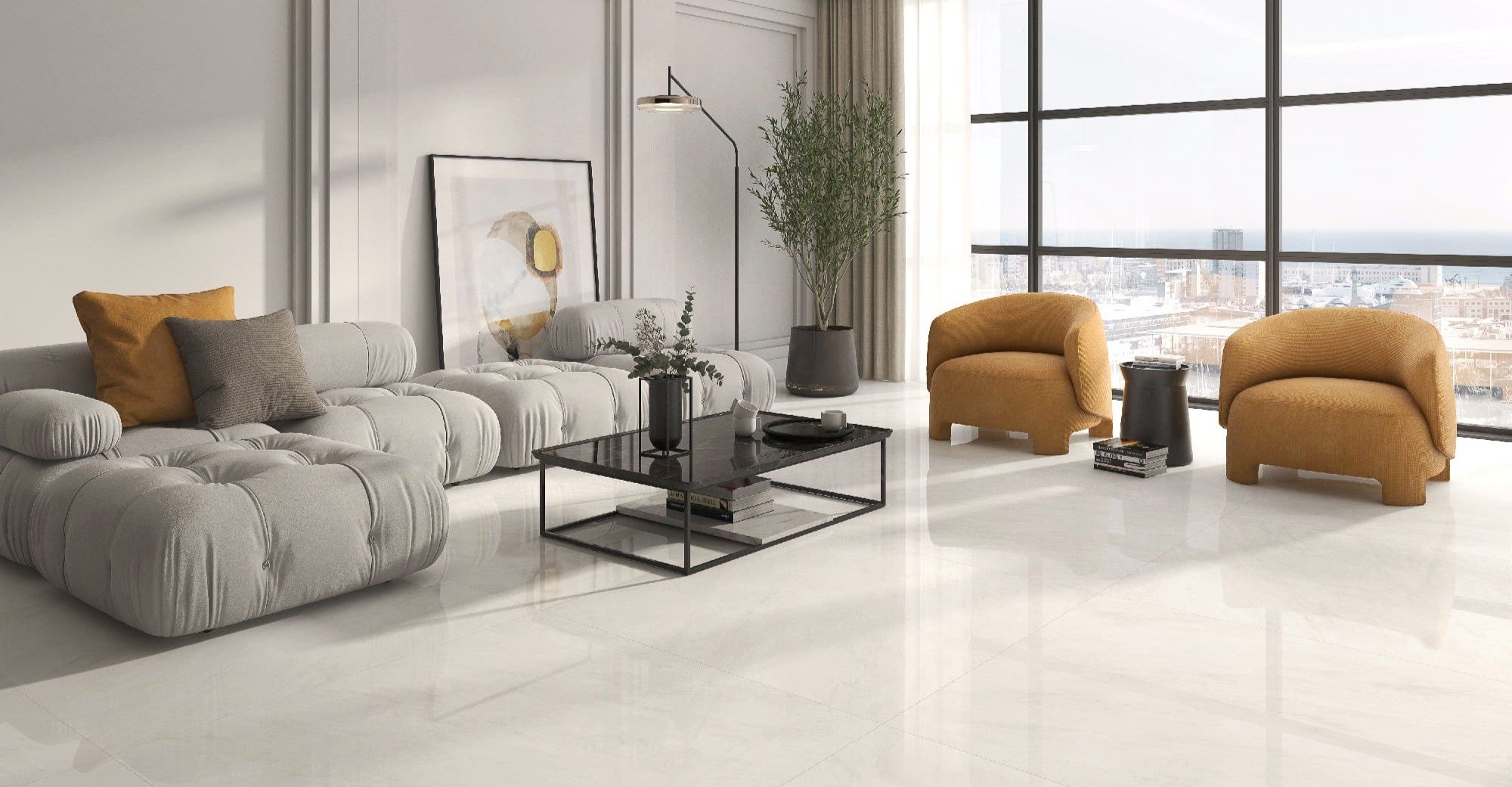
Let’s Learn About Porcelain Tiles
If you’re on the market for new floors or you’re considering a renovation in the future and all you want is to gather some information about porcelain tile. So you don’t want to make an irreversible mistake and you don’t want to overpay for your tile. Generally want to buy the good stuff for a fair price, right?
Whether you go online or ask your contractor about different qualities and grades of porcelain tile, the first thing that’s coming up is the PEI rating. Now everybody’s telling you to buy a PEI-4 or PEI-5 tile. However, you want to learn a little bit more, and that’s when you realize that everybody is telling you a different story.
We’ll begin by explaining what’s PEI
According to the web, tile contractor and some tile stores, PEI stands for Porcelain Enamel Institute. However, according to the Tile Council of North America (TCNA): the PEI is an incorrect reference.
Now, this is what TCNA says: The ASTM C1027 test method for evaluating glazed tiles for resistance to abrasion classifies tiles on a scale of 0 to 5, depending on the point at which abrasion is first visible. This classification is often incorrectly referred to as the “PEI rating”. The correct term is visible abrasion classification.
If you want to read the whole article please click here.
PEI, is the visible abrasion level of the glaze ASTM C1027. The Newest version of ASTM C1027 is ASTM C1027 -19 (2019 edition.)
Abrasion resistance is the capacity of the glazed surface to resist the wear caused by foot traffic or the abrasion caused by mechanical equipment. Thus the wear action determines the suitable applications for each tile.
- Class5: Heavy Commercial: suitable for intense commercial and all residential.
- Class4: Commercial: suitable for medium commercial and all residential.
- Class3: Heavy Residential, Light Commercial; suitable for all residential, average abrasion.
Now we’ll stop right here. Since the glaze of 99.99% of porcelain tiles are within Class 3 and Class 4, these numbers should not be our concern. Besides, when designing a shopping mall or a busy restaurant, the architect and the GC are going to consider other factors and pick an unglazed, through- body, porcelain tile to which none of the above will apply.
So, how tiles are classified?
European standard EN 14411 and ISO 13006:2012 establishes a classification based on:
1)Forming method, assigning code A for extrusion and B for semi-dry pressing. (A is not superior to B)
- Extruded tile: A tile, shaped in the plastic state in an extruder, cut into tiles of predetermined dimension and designated as group A.
- Dry-pressed tile: A tile formed from a finely milled body mixture and shaped in molds at high pressure and designated as Group B.
2)Water absorption capacity (E),
- Ia (E ≤ 0.5%)
- Ib (0.5 < E ≤ 3%)
- IIa (3<E≤6%)
- IIb (6<E≤10%)
Definition of Ceramic Tile
Thin slab made from clays and/or other inorganic raw materials, generally used as covering for floors and walls, usually shaped by extruding (A) or pressing (B) at room temperature, but may be formed by other processes (C), then dried and subsequently fired at temperatures sufficient to develop the required properties
Definition of Porcelain Tile
A ceramic tile whose average absorption does not exceed a mass fraction of 0.5 % or its equivalent, glazed or unglazed and belonging to groups AIa or BIa.
Therefore according to forming methods, there are two types of porcelain tiles.
Porcelain Tiles Made By Extrusion Method: AIa
Porcelain tiles made by dry dressing method: BIa
All Interior, Exterior Wall, and Floor Tiles That Concern Us Are Dry Pressed Tiles
Therefore, Dry Pressed Tiles Are Grouped As Below:
- Porcelain Tile: A dry pressed tile with (E ≤ 0.5%) BIa
- Glossy Tile: A dry pressed tile with (0.5 < E ≤ 3%) BIb
- Ceramic Tile: A dry pressed tile with (3<E≤6%)BIIa
- Wall Tile: A dry pressed tile with (6<E≤10%)BIIb
How do we group dry pressed porcelain tiles?
Porcelain alone is a high-quality product. As long as you make sure that your tile is a dry pressed ceramic tile with water absorption E ≤ 0.5, it meets all the requirements for residential floors.
Now if you’re buying a glossy tile (glossy finish is not the same as the polished finish), your tile is not a porcelain tile it’s a ceramic tile with low water absorption that belongs to group BIb (0.5 < E ≤ 3%). Glossy tile is not a bad product. It’s just not porcelain.
Therefore if we want to group dry pressed porcelain tiles,
Tiles may be glazed (GL) or unglazed (UGL); they are incombustible and are not affected by light.
Glaze
Vitrified covering that is impermeable
According to IPC (Institute Promocio Ceramica) and some other resources, Porcelain tiles with water absorption E≤ 0.1 are considered higher quality porcelain tiles.
Colored-Body Tiles
Now, if the mass of the tile is colored to a similar color as its glaze, this is the tile that we call Colored-Body Tile. In the case of chipping, it helps hide the chipped spot.
Un-Glazed Tiles
Some tiles are made without the glaze. These tiles usually are either through-body or double charged tiles.
- When the design and the colors of the tile are consistent all the way through the mass, we call this tile a through-body tile.
- If the design and the colors of the tile are consistent halfway through the mass, we call this tile a double-charged tile.
Therefore these tiles don’t get affected by the abrasion. Thus they have better resistance for scratches, stains, and chemical agents. Moreover, they offer a higher breaking strength. However, these tiles don’t have the protective features of the glaze. Therefore, unglazed tiles must have lower water absorption levels than glazed porcelain tiles. Whereas through-body and double charges tiles carry the highest technical specs, these are the tiles that we have to be very careful when choosing. Therefore unglazed tiles from the unknown origin may stain.
What are the other important specs?
Porcelain tile is an extremely durable product that won’t wear off easily. For example, think of your ceramic kitchen plates that you put in your dishwasher. In comparison to your porcelain floor tiles, the way they are made is pretty primitive. However, you can put them in a dishwasher thousands of times, and each time they clean very easily. Additionally, they never stain. Therefore when purchasing porcelain tile, PEI rating (the correct term Visible Abrasion Classification) should not be a concern since all porcelain tiles already meet those specs.
Since, tiles cannot be made flat all tiles bend a little. ISO 10545-2 determines the required values for flatness. Therefore this is the first thing that an installer or contractor will check. Because flatter tiles make the installation easier you may want to ask for ISO 10545-2 compliance of your tile when buying.
What else should I know?
Porcelain tiles are 98% recyclable, green products. However, some dyes may contain Led and Cadmium. Thus European regulations strictly mandate the control of Lead and Cadmium Levels with ISO 10545-15 with harsh penalties. Therefore, we consider Italian, Turkish, and Spanish are safer than Asian tiles. Especially If you’re considering a “White Tile” for your floors, you may want to control that your tile’s led and cadmium release level is: Pb <0.1 Cd<0.01
Tiles scratch resistance is measured with Mohs. Some sources may refer to Mohs as deep abrasion. Notably, matte finish porcelain tiles scores higher on Mohs scale and they are very hard to scratch. Alternatively, polished porcelain tiles are not as resistant against scratches as matte finish tiles because what scratches is not the tile but it is the finish. However, they are much more scratch resistant than marble and hardwood floors or epoxy polish. So if you want to use a polished tile in a commercial area, the highest Mohs rating will be 6. Therefore you may want to consider a Lapato – Semi Polished Tile.



Checking quality of porcelain tile made in local tile factory. Would their tile quality be a good as what I would buy from a local tile store? I do not want a China made tile or any “ingredients” from China. I guess your paragraph stating preferred countries and not Asian covers that?
Cornelia, I don’t know what tile factory you’re referring to as your local tile factory. Even I knew, It would be very difficult for me to make a comment since I didn’t buy from them. The only American company I know is Florida Tile. As far as I know, there are European companies in China manufacturing tiles and they are not bad. However, there are some law suits against all Chinese tile companies filed by American companies. Those law suits have potential big penalties for US companies importing from China starting from the date law suits were filed. For that reason, nobody in his/her right mind, would import tiles from China. We feel more comfortable selling tiles made in Europe.
I have a BFA degree in ceramic sculpture and it’s my understanding that one of the defining properties of porcelain is that it is vitrified. Unglazed porcelain should be virtually 100% impermeable to water, fired at cone 10 or higher. Is that what through body tiles are? Are the glossy unglazed tiles “through body” and vitrified? How do they get them so glossy, by polishing to 5000 grit or higher? What about oil? If you leave oil on an unglazed through body tile for a few days, will it stain the tile?
Hello Topher,
To my knowledge, Ceramic tiles are grouped in two categories regarding to production method. Group A Extruded tiles. Group B Pressed tiles. Whether its a Group A or B ceramic tile, ceramic tiles with water absorption ≤0.5% are called porcelain tiles. The marking for those tiles are A1(extruded porcelain tile) and B1 (pressed porcelain tile)
If a tile’s color and the design are consistent through the tile, it’s called through body. These tiles don’t have a printed design and they are unglazed. As far as know, polishing became possible with nano sealing method. Before that, they used a shiny glaze. (and still some tiles they come with the shiny glaze.)However, porcelain body is too dense to absorb the shiny glaze.Those tiles are not porcelain. The marking for these tiles is B2 Polishing is made by polishing a sort of glass that is applied to the tile. Basically, tiles surface is covered with a type of glass and the glass iss polished. However, no matter how little those glass particles are, they won’t make an impervious surface. Therefore, they are nano sealed.
This is a very well thought out article, thank you for sharing. Between glazed and unglazed tiles, which hold up better?
Hello Ben, porcelain tiles are very durable products. Either one will last a longtime. Just get the one you like the best.